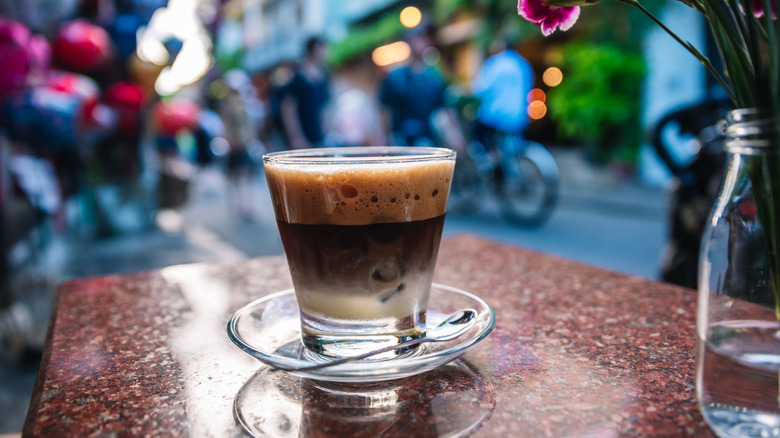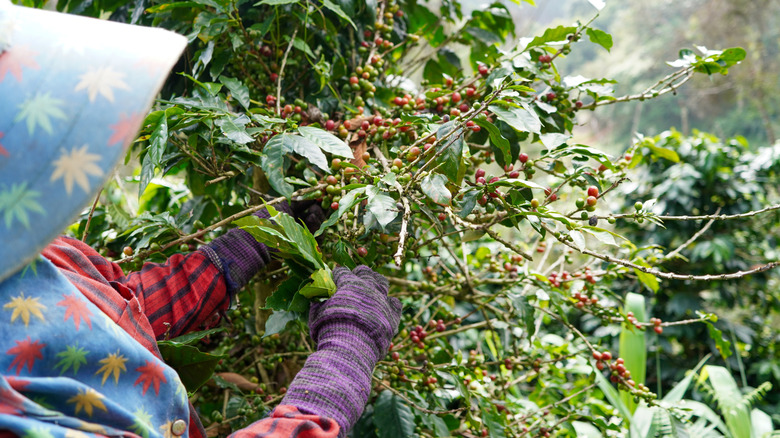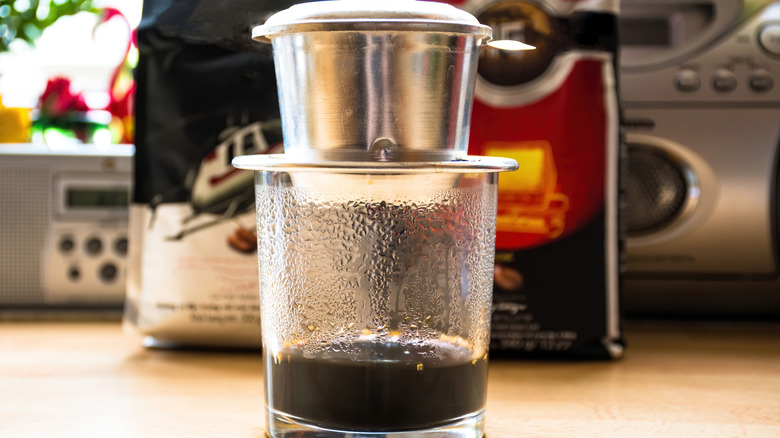Why Is Vietnamese Coffee So Strong?
If you've ever tried Vietnamese coffee, you probably haven't forgotten the experience. It's super strong, thick, and packs way more of a punch than your average morning brew. It reminds me somewhat of Italian coffee in terms of how bitter it is. And though it's not my cup of tea, I can still appreciate the culture and uniqueness of the coffee — this isn't just a strong cup of joe for the sake of it (I'm a fan of Vietnamese iced coffee, though).
Vietnamese coffee is the product of centuries of tradition and smart coffee-making choices that result in a beverage with high levels of caffeine and a deep taste. The reason for the drink's intensity comes down to a few things, namely the kind of beans they use, the way they roast them, and the brewing method that pulls every last bit of flavor into your cup.
It's different from your typical drip or pour-over situation, though. Vietnamese coffee uses a unique metal brewer called a phin. Most of the time, it's brewed with robusta beans instead of arabica. These beans have more caffeine and naturally trend bitter, which means you're getting a cup that's as energizing as it is flavorful. How can a bitter cup of coffee be flavorful, you ask? Well, aside from the fact that some people like it black, another way to make an authentic cup of Vietnamese java is to add condensed milk which gives you a dessert and wake-up call all in one. It's important to remember this drink is meant to be savored slowly — not gulped.
It's all about the robusta beans
The secret weapon behind Vietnamese coffee's power is the robusta bean. Most people in the United States and Europe drink arabica-based coffee blends, which are smoother and more acidic. Robusta beans are a different story altogether because they contain nearly twice the caffeine of arabica beans, which explains why Vietnamese coffee hits harder; almost making you question if it's even okay to consume that much caffeine at once. Robusta also has a stronger, more bitter flavor with earthy notes that go well with sweetened condensed milk.
Vietnam grows a lot of robusta beans. The country is the second-largest coffee producer in the world, in fact. Robusta is easier to grow at lower elevations and is more resistant to pests and disease, which is part of why it's so widely grown there. The beans are usually roasted dark, giving the final brew an almost chocolatey flavor that's rich without doing too much. If you're someone who finds regular coffee too weak or too acidic, Vietnamese robusta might be your new favorite.
The phin brewer makes it even bolder
As mentioned, the brewing method matters just as much as the beans. Vietnamese coffee isn't brewed in a machine or dripped through a paper filter. Instead, it's made with a phin, a small metal coffee maker that sits right on top of your mug. It looks simple, but it's a tool that forces the water to drip slowly through the coffee grounds, sort of like a cross between a pour-over and a French press.
That slow drip process allows more time for the hot water to pull out all the oils and flavors from the robusta grounds. Since there's no paper filter, all of that full-bodied texture makes it into your cup. Using a phin also turns coffee into more of an experience than it already is. You don't press a button and walk away like normal. You wait, watch, and sip with intention. It's slower, but it pays off in taste. So, whether you drink it black or mix it with sweetened condensed milk over ice, real caffeine enthusiasts love this stuff.


